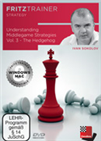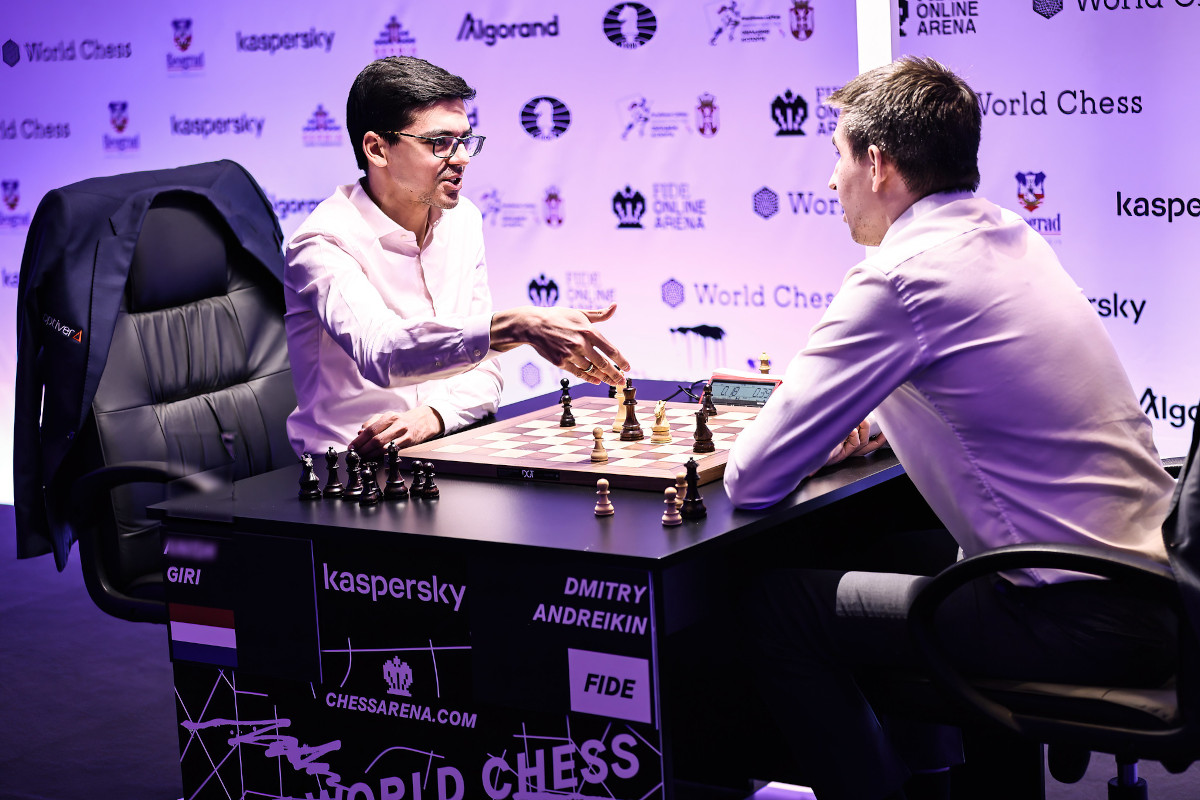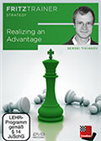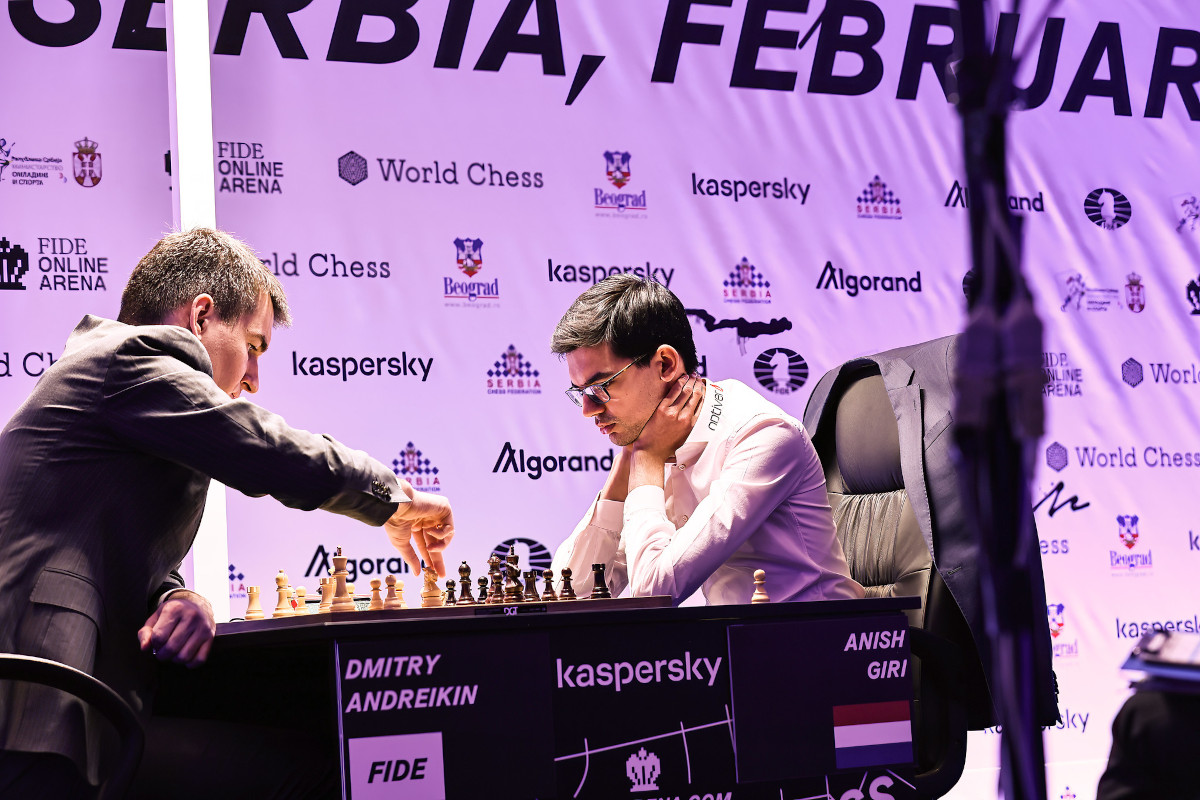“I started missing many things”
So far no tiebreak in this year’s Grand Prix series has been decided in blitz encounters. Both in Berlin and now in Belgrade all playoff winners managed to reach the next stage by prevailing in the initial 2-game rapid matchup. In the fight to reach the final of the second stage, Dmitry Andreikin defeated Anish Giri by a 1½-½ score to become Richard Rapport’s rival in the tournament’s final.
 Throughout my playing career I have found the Hedgehog one of the most difficult type of positions to master. The basic aim of this video is to improve understanding of these complex positions and to help tournament players score better.
Throughout my playing career I have found the Hedgehog one of the most difficult type of positions to master. The basic aim of this video is to improve understanding of these complex positions and to help tournament players score better.It was a nervy battle between the two experienced grandmasters. Giri had the black pieces in the first game and agreed to enter a threefold repetition from a favourable position as early as on move 18. The Dutch star failed to notice that he had chances to create problems for his opponent, whose pieces were somewhat over-extended.
Giri perhaps considered that getting a quick draw with black to start the match was a good result, and here went for 18...Ng6 19.Ne6 Nf8 20.Nd4, repeating the position.
Instead, in the diagrammed position, Black can try for more with 18...Qg4, preparing to attack the h2-pawn later on, or with 18...Bc5, activating the bishop. Giri later lamented not having made these ideas work in his calculations.

The ever-eloquent Anish Giri
In game 2, Andreikin proved he wanted to fight despite having the black pieces. The Russian played the Sicilian Defence and deviated from theory by pushing his h-pawn on move 11.
11...h5 meant Black’s kingside was going to be weakened permanently, and after 12.h3 Andreikin immediately played 12...Kf8, losing the right to castle.
Giri’s play from this point on was tenacious, positionally upping the pressure against his opponent’s somewhat uncoordinated setup. Andreikin kept one of his knights on the kingside, strongly defending that side of the board, which prompted Giri to look for an opening on the opposite flank.
By move 31, White had doubled his rooks on the b-file, and had his rival up against the ropes.
Here the best for Giri was to bring another piece to the attack with 32.Nb5, gaining a tempo against the black queen to jump to d6, looking at the f7-weakness. White’s 32.Rxf8+ was not a blunder per se, but it did make his job of converting his advantage much harder.
There followed 32...Qxf8 33.Nc6 Qc5 34.Rb7 Nf5
 It’s a problem every player encounters when he stands better in a game: how to convert his plus into a full point? In this DVD the author answers this difficult question of chess strategy, considering both the psychological aspects of the realisation of an advantage and the technical methods.
It’s a problem every player encounters when he stands better in a game: how to convert his plus into a full point? In this DVD the author answers this difficult question of chess strategy, considering both the psychological aspects of the realisation of an advantage and the technical methods.
35.Ne7+ here was a very nice shot by Giri, since 35...Nxe7 is bad due to 36.Qg6. Black has 35...Kg7 though — and it was in this position that Giri blundered decisively.
The Dutchman later noted that at some point, when he was running out of time, he “started missing many things”. When a sharp position appears on the board, especially during a rapid game, it becomes necessary to combine precise calculation with instinctual play, and this time around it was Giri who lost the thread amid the complications.
36.Nxg6 is another good-looking idea, as after 36...Kxg6 White has 37.Qg4+, with a perpetual check. Andreikin, however, found the refutation — 36...Qc6, attacking the rook first.
Giri continued with 37.Rxf7+
37...Kxf7 38.Nxh8+ Kg7 leads to a winning queen and knight endgame for Black. Instead of grabbing the f7-pawn, Giri could have got better practical chances with 37.Ra7, keeping the pin and forcing Black to find a winning plan while low on time amid a tense struggle.
In the game, Andreikin kept his cool and showed good technique and a suitable pragmatic approach to convert his advantage into a 63-move victory. Starting Saturday, the Russian will face an in-form Richard Rapport in the final of the series’ second stage.
Links
























